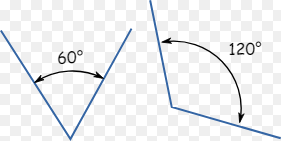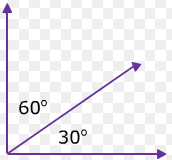What is an acute angle?
A point where two rays meet to form an angle.
Vertex
24
Classify the 2D object. (Name, convex or concave, regular or irregular)
Hexagon, convex, & regular.
Name the polyhedron.
Triangular prism
How many sides does a dodecagon have?
12
A line, segment, or ray that divides an angle in half is called a(n)
angle bisector
51
Classify the 2D object. (Name, convex or concave, regular or irregular)
Heptagon, concave, & irregular.
Name the polyhedron.
hexagonal pyramid
The two angles are considered to be _____________. (select all that apply)
 A) Complimentary
A) Complimentary
B) Supplementary
C) Adjacent
D) A linear pair
B) Supplementary
only
When naming an angle the letter representing the vertex must go where?
In the second position
Solve for x.
9
What is the area of the triangle?
54 units2
Find the surface area of the polyhedron.
208 inches2
What is the measure of a straight angle?
180 degrees
What is a ray?
A part of a line that has one endpoint and goes on endlessly in one direction.
!!DAILY DOUBLE!!
Ray BD is an angle bisector of angle ABC. Angle ABD is 36 degrees. Find x if angle DBC is 12x.
3
Find the circumference of the circle. Round to the nearest hundredth place.
31.42 inches
Find the volume of the polyhedron.
1080 inches3
True or False.
All Linear pairs are supplementary, but not all supplementary angles are linear pairs.
True.
The two angles are considered to be _____________. (select all that apply)

A) Complimentary
B) Supplementary
C) Adjacent
D) A linear pair
A and C
Solve for x.
51
Find the area of the circle. Round to the nearest hundredth place.
78.54 inches2
Find the volume of the cylinder. Round to the nearest hundredth.Find the volume of the cylinder.
904.78 inches3